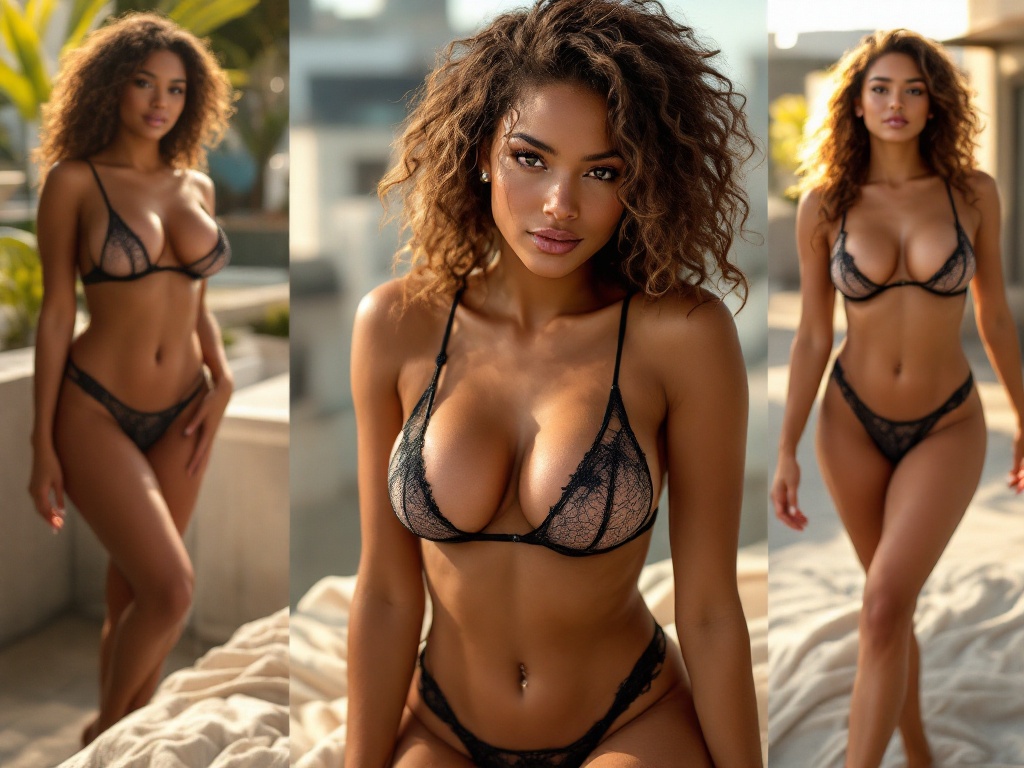The emergence of artificial intelligence has ushered in remarkable progress in digital art, notably within the complex sphere of erotic imagery. This evolution invites intense scrutiny surrounding realism—how faithfully do AI-created nude images reflect human aesthetics and perception? With an ever-growing suite of tools and techniques at our fingertips, judging the caliber of these images transcends mere superficial assessment. It demands a profound grasp of both objective metrics and subjective interpretation. The contrast between machine-generated visuals and human expectations provides a captivating perspective for examining the essence of digital intimacy. Can audiences genuinely differentiate between AI creations and real-life depictions? This article investigates both the metrics and methodologies crucial for appraising the realism of AI nude imagery.
Understanding AI in Erotic Imagery
In the realm of visual media, Artificial Intelligence covers a broad spectrum of techniques aimed at imitating human creativity. As AI systems process extensive datasets of existing images, they learn to mimic and reproduce patterns, styles, and features characteristic of erotic art. This capability can result in unbelievably realistic depictions yet presents a formidable challenge in assessing credibility and excellence. Neural networks and machine learning algorithms enable AI not only to generate but also to evaluate visual content. Given the sensitive nature of erotic images, this blend of technology and ethics raises further inquiries. Grasping these fundamental ideas is vital for anyone seeking to evaluate the quality of AI-generated nude visuals.
Importance of Realism in AI Nude Images
Realism is crucial for AI-generated nude images, as it significantly influences user experience and emotional connection. An intensely realistic image may provoke stronger emotions and reactions, augmenting audience engagement and satisfaction. On the other hand, images that appear artificial or misshapen can create bewilderment or even unease, detracting from the desired experience. The effectiveness of an image often hinges on subtle details—such as shadows, textures, and anatomical precision—that mirror human characteristics. As AI technology advances, prioritizing realism will dictate its triumph across various applications, from entertainment to virtual reality. These stakes highlight the imperative for a detailed evaluation of AI’s ability to produce striking images that align with human standards.

Metrics for Evaluating Image Quality
Several metrics can be employed to judge the realism and quality of AI-generated nude images, each offering a distinct vantage point for a comprehensive appraisal. Here are some of the principal metrics used in this context:
- Structural Similarity Index (SSIM): Evaluates perceived variations in structural data between the original and created images.
- Peak Signal-to-Noise Ratio (PSNR): Examines the balance between the highest possible signal power and the noise level, spotlighting quality differences.
- Mean Squared Error (MSE): Measures the average squared variance between the generated and authentic images.
These metrics offer a quantitative base for judging AI-created imagery. Nonetheless, numerical data alone cannot capture the complete aesthetic experience that viewers crave in erotic content. Therefore, integrating quantitative metrics with qualitative evaluations is vital for a well-rounded analysis.
| Metric | Description | Application |
|---|---|---|
| SSIM | Assesses structural fidelity and perceived quality. | Utilized for assessing image fidelity. |
| PSNR | Evaluates the ratio between maximum signal power and noise. | Frequently employed in lossy compression methods. |
| MSE | Quantifies the average squared errors between two images. | Useful for examining pixel-level fidelity. |
Methods for Assessing Realism
Various methods can be employed to evaluate the realism of AI-created nude images, each providing unique insights into the quality of these visual works. Among the prominent methods are automated evaluation techniques and human assessments. By utilizing these diverse approaches, a more thorough understanding of image quality can be achieved.

Automated Evaluation Techniques
Automated evaluation is progressively gaining traction in the arena of AI imagery. A favored method involves the use of deep learning algorithms to scrutinize visual data and predict quality based on learned patterns. These algorithms offer instant feedback based on how closely a generated image aligns with recognized quality standards. Furthermore, Generative Adversarial Networks (GANs) have revolutionized image creation by setting two networks in competition to enhance realism. While these methods deliver remarkable results, they still require meticulous human oversight to ensure ethical standards are upheld.
Human Assessment Techniques
The human element remains critically important in the evaluation of AI-generated images. In-depth analyses by image quality experts can provide nuanced insights that automated systems might overlook. Moreover, gathering feedback from a wide audience offers a broader viewpoint on the perception of realism. Combining expert evaluations with public feedback fosters an environment where subjective experience is highly esteemed. This blend of insights can lead to improvements in the quality and authenticity of AI-generated content.
Challenges in Evaluating Realism
Despite technological advances, evaluating the realism of AI-generated nude images remains fraught with challenges. A major concern involves the ethical implications. The creation of erotic content through AI raises issues related to consent, ownership, and the potential for misuse. Given the delicate nature of this genre, such considerations must not be ignored. Alongside ethical challenges, the limitations of current metrics add further complexity to the evaluation process.

Ethical Considerations
As creators exploit AI to expand the frontiers of erotic art, ethical considerations become paramount. Topics like consent and representation must be carefully examined to prevent the perpetuation of harmful stereotypes or the exploitation of vulnerable groups. Setting guidelines for responsible AI usage will be fundamental in shaping the future of erotic imagery. Creators must remain vigilant to ensure their work respects the dignity and rights of the individuals portrayed.
Limitations of Current Metrics
Despite technology’s progress, existing metrics often fall short of capturing the subtle nuances that shape human perception of realism. Metrics such as SSIM and PSNR provide quantitative insights but may not account for the emotional or aesthetic experiences inherent in art. Developing new evaluative measures capable of fully capturing these aspects is necessary for future advancements in AI nude imagery. As technology keeps advancing, so too must our assessment methods evolve.
Conclusion
In summary, appraising the realism of AI-generated nude images is a multifaceted task requiring a balance between quantitative metrics and qualitative assessments. Conventional metrics lay the groundwork for analysis, but the intricacies of human perception demand a more nuanced approach. By blending automated evaluation techniques with human insights, we can acquire a holistic understanding of image quality. As technological advancements persist, focusing on realism in AI-generated content will likely dictate the future course of both creative and analytical practices in this field.
Frequently Asked Questions
- What is the most prevalent metric for assessing AI image quality?
The Structural Similarity Index (SSIM) is commonly recognized as one of the most effective metrics. - How do human assessments enhance the evaluation process?
Human evaluations offer essential insights that quantitative metrics alone cannot, notably in terms of subjective perspectives. - What are the main challenges in ensuring the realism of AI-generated nude images?
Key challenges include ethical considerations and the restrictions of current metrics that may not fully capture human perceptions of realism. - Are there new methods being explored for image evaluation?
Yes, ongoing research is continually introducing new metrics and evaluation techniques to enhance the accuracy and realistic portrayal of AI-generated images.
